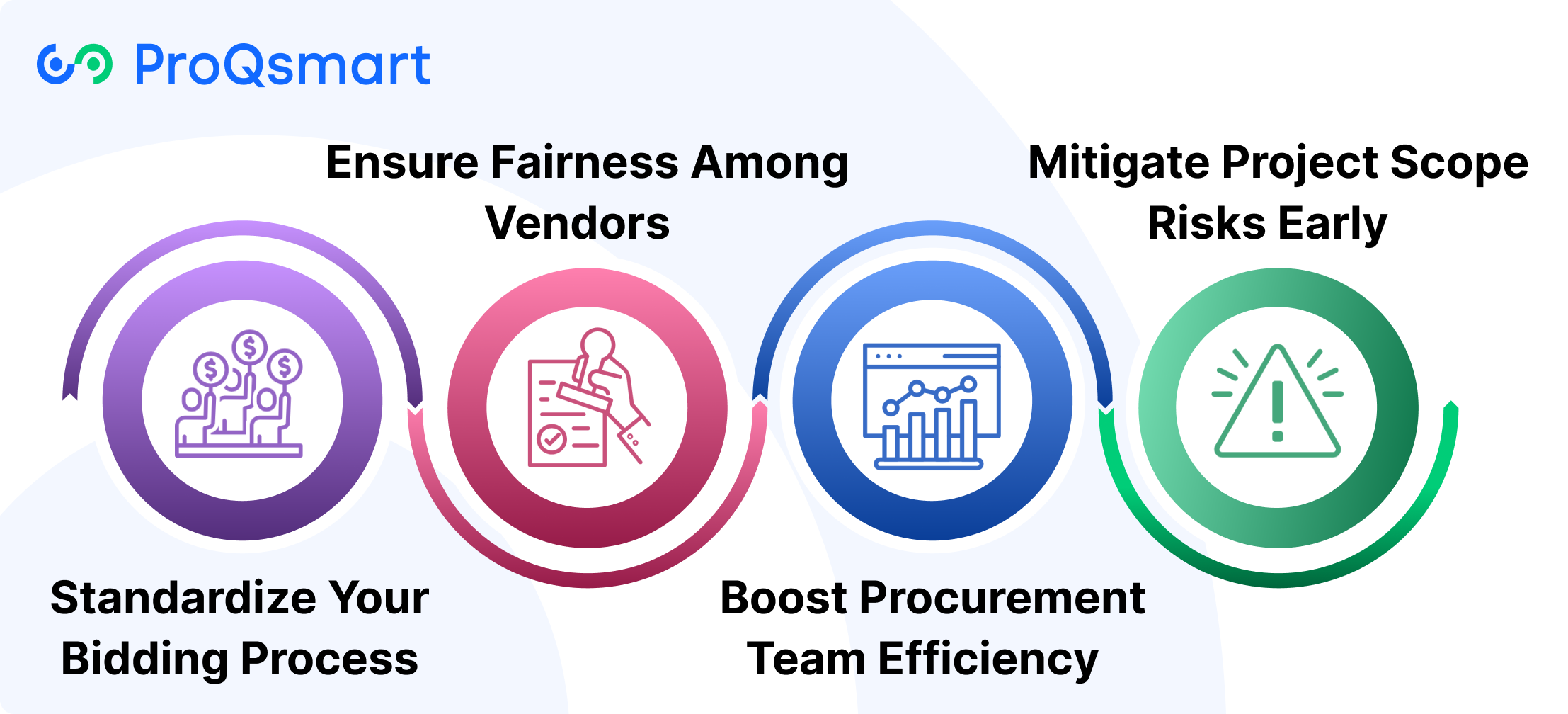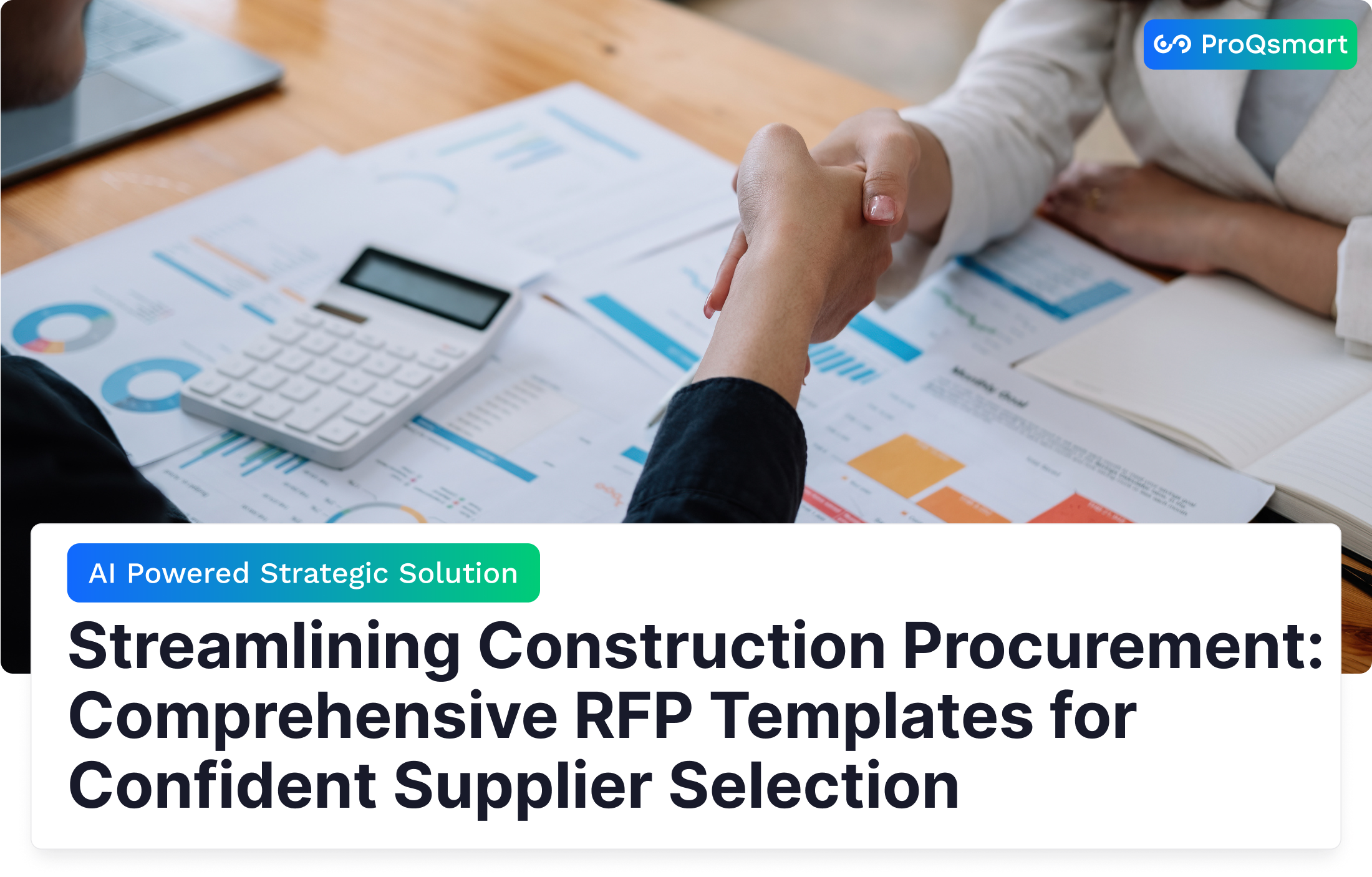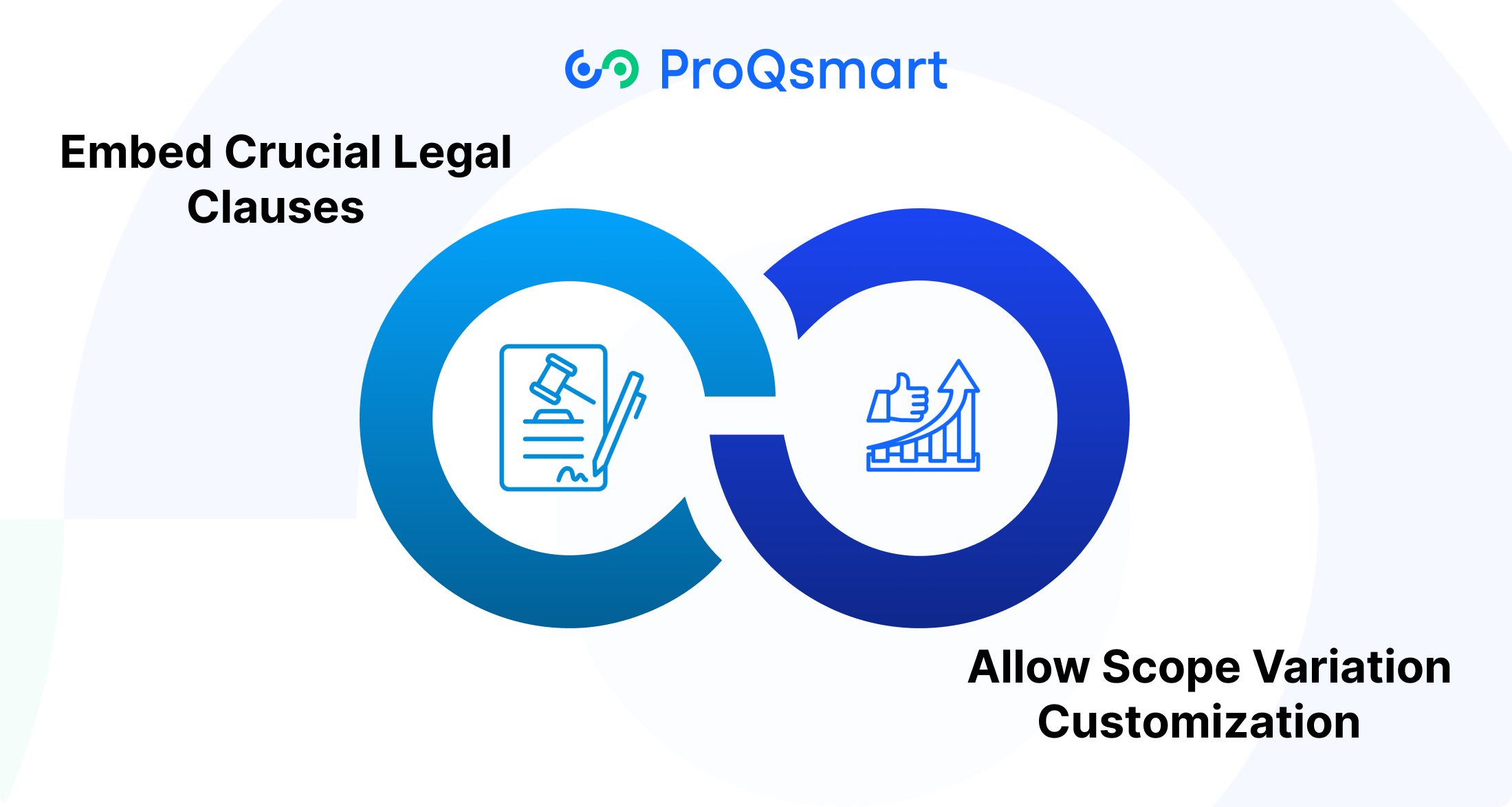A well-designed Request for Proposal (RFP) template is a powerful tool that goes beyond saving time—it establishes a clear, consistent framework for sourcing suppliers and service partners in construction projects. By clearly outlining project requirements, technical specifications, timelines, and compliance standards upfront, an effective RFP template helps all parties understand expectations from the very beginning. This clarity reduces misunderstandings, accelerates the evaluation process, and ensures proposals are relevant and complete.
Using a standardized RFP template also promotes fairness and transparency, providing a level playing field where every bidder is evaluated against the same criteria. This not only simplifies decision-making but also creates an auditable trail that supports accountability and regulatory compliance. For teams working in highly customized or complex environments, such as custom manufacturing or specialized construction, a robust template serves as a reliable starting point—helping to tailor each solicitation without reinventing the wheel.
In the sections ahead, we’ll explore the key elements that make RFP templates effective, best practices for customization, and how leveraging these templates can lead to better supplier partnerships, reduced risk, and smoother project execution.
Why Use RFP Templates Strategically?

When organizations use RFP templates strategically, they see tangible, immediate benefits to their internal processes. When used effectively, these templates stamp down expectations and standards. Consequently, bidders are able to quickly grasp the requirements and develop a more thorough response.
For large CapEx projects, time and cost savings come as teams skip repetitive drafting and focus on what matters most. Beyond compliance, these templates allow teams to identify vendor strengths and gaps early on. Now, teams can use a shared outline to easily side-by-side compare written bids.
Standardize Your Bidding Process
Organizations that drive use of standardized templates in proposals experience consistent high performance. Templates introduce the same brand, tone and feel to each proposal. This will save the team, but the bidders, valuable time.
Each proposal lays out the information you need in a very digestible manner. This standardization allows them to better compare available options, streamlining the decision-making process. It expedites reviews across projects, as reviewers are accustomed to the same format for every review.
Create a more reasonable path. A manufacturing lead is infinitely better poised to juggle competing projects. They should be able to reference the template and have prospective bidders return answers that are easy to compare.
Ensure Fairness Among Vendors
Templates ensure you provide all vendors with an equal opportunity. This way each bidder receives the same information and set of rules. This ensures the integrity of the process.
Definite guidelines included in the template lay the groundwork for how proposals will be evaluated. That allows everyone to see what’s required and how all the competitors will be scored, which fosters rigorous, transparent competition.
Boost Procurement Team Efficiency
Pre-built templates drastically reduce the amount of time engaged teams spend on paperwork. Rather than begin the process from ground zero every cycle, agencies and their teams share a common starting ground.
This allows everyone to stay nimble and keeps the team operating with one voice. What’s more, teams can easily share and update these templates as projects evolve, ensuring that the entire team is always on the same page.
Mitigate Project Scope Risks Early
When teams define the work in detail upfront, they identify problems before construction begins. Templates provide a space to list every step, deliverable, and need.
That translates to less confusion or items being overlooked. Teams can filter out vendors that do not match requirements, identify deficiencies, and define specific guidelines for what is required.
Core Components of Effective RFP Templates
A well-structured Request for Proposal (RFP) template is essential for fostering transparency, efficiency, and fairness throughout the procurement process, particularly in construction project management. It ensures that both buyers and vendors have a clear understanding of expectations, requirements, and evaluation criteria, which ultimately leads to higher-quality bid proposals and better project outcomes. Below are the key components every procurement-focused RFP template should include.
Clear Project Objectives
Start by clearly defining the project goals and desired outcomes of the construction project management. Whether the aim is to improve operational efficiency, reduce costs, enhance service quality, or implement new technologies, articulating these objectives upfront helps vendors align their bid proposals with your strategic priorities. Clear objectives also provide a benchmark against which success can be measured.
Comprehensive Company Background
Providing a concise overview of your organization—including its mission, values, and relevant past projects—gives potential clients important context. This background information helps vendors tailor their bid proposals to better fit your organizational culture and operational environment, increasing the likelihood of a successful bid proposal.
Detailed Scope of Work
A thorough description of the scope of work is critical in a successful bid proposal. This section should outline all tasks, deliverables, and any specific constraints or requirements. Detailing what is expected at each stage removes ambiguity and enables contractors to accurately assess their capabilities and resources needed to fulfill the contract.
Defined Project Milestones and Timeline
Including a project timeline with key milestones and deadlines in the bid proposal provides vendors with a clear picture of the schedule and pace expected. This transparency allows vendors to plan their work accordingly and helps both parties monitor progress throughout the construction project management lifecycle, reducing the risk of delays.
Transparent Budget Parameters
Clearly stating your budget expectations, including any spending limits and how costs should be itemized, helps vendors prepare effective bid proposals. Transparency around budget and payment processes minimizes misunderstandings and supports smoother financial negotiations.
Proposal Submission Guidelines
Detailed instructions on what documents to submit, including a bid proposal template and specific format, ensure vendors can comply easily and consistently. Including information about submission portals, deadlines, and any required follow-up steps helps streamline the construction project management process.
Vendor Selection Criteria
Clearly outlining how bid proposals will be evaluated is vital for fairness and clarity. Specify the weighting of different factors such as price, experience, technical capability, and delivery timelines. This guidance helps vendors focus their proposals on what matters most to your organization and facilitates effective proposal submissions.
Essential Contact and Client Details
Providing clear contact information for questions or clarifications encourages open communication and reduces misunderstandings, enhancing the chances of submitting effective bid proposals and meeting potential clients’ specific needs.
Terms and Conditions
Including legal, compliance, and safety requirements in the bid proposal ensures that vendors understand their obligations before submitting bids. This section protects both parties by setting clear expectations around contractual terms and risk management.
Pricing Structure and Payment Terms
Detailing how pricing should be presented—including any incentives for early completion or penalties for delays—helps vendors structure their bids appropriately. Clear payment schedules and accepted methods also prevent confusion and foster trust between parties.
Incorporating these core components into your RFP templates creates a solid foundation for a transparent and efficient procurement process. It enables better comparison of proposals, promotes fairness, and supports informed decision-making—ultimately leading to stronger supplier partnerships and successful project delivery.
Tailor Templates for Construction Projects
Construction projects require customized bid templates tailored to the new job, client, and job site. Tailoring templates goes a long way in ensuring each team understands the unique requirements of the project, remaining transparent about those requirements, and reducing expensive mistakes.
An example industry-wide, where uniformity is vital, RFQ documentation is critical as well. Flexibility in this field means uniformity in RFQ documentation. Today, eight out of ten procurement teams use digital tools.
So templates need to be easy to use and customizable for incorporation into web-based systems. It’s simple enough to customize a five-page construction proposal template to the specific requirements of each project. This means recalibrating your material estimates, your labor charges, and your overhead costs.
Embed Crucial Legal Clauses
Legal provisions contained within templates shield both owners and contractors from liability. Adding clauses recognizing local law, responsibility and risk, and dispute resolution protect the projects from future controversy or legal action.
Too many teams rely on the legal reviews to review these clauses. ProQsmart increases compliance through automatic quality assurance checks and reliable audit trails for materials sourcing information.
Allow Scope Variation Customization
Bidders can be encouraged to submit effective bid proposals that include alternative ideas to more effectively meet the project goals or recommend changes in scope. This enables project teams to identify optimal alternatives and achieve superior outcomes on their investments.
Define Clear Evaluation Criteria
Establishing clear evaluation criteria upfront is essential for a good, fair bid selection process. From the start, teams begin the Request for Bid (RFB) procurement process by determining the project’s most critical needs. From there, they customize the template to meet the most critical criteria.
This initial step would assist them in choosing the most qualified consultant, contractor, supplier, or partner. By clearly defining what they need up front, they prevent any misunderstandings down the line and ensure that the process remains on track.
Establish Transparent Scoring Methods
Teams create a scoring rubric that details how each proposal will be scored and which criteria will be prioritized. For example, they might award 40 points for technical merit. Maybe they choose to give 20 points each for experience, cost, and timeline.
Having a common evaluation rubric ensures that everyone is looking at the same factors. Scoring all bids using the same scoring guide helps prevent bias and ensures consistency in evaluation. Teams often include examples, like showing how a bid with a strong timeline but higher cost could still score high if it meets urgent needs.
That way, when it’s time to bid, bidders understand what will be valued most before they hit submit.
Weight Criteria by Importance
Not every aspect of a proposal counts equally. Teams decide what weight to assign to each category, ensuring that their score adds up to 100%. If quality is deemed the most important, it could receive 40% of the weighting, and cost only 20%.
This decomposition tells bidders what matters most, so they can put their effort where it counts the most. By publicly sharing these weights, teams demonstrate fairness within the process and allow competitive bidders the opportunity to present themselves in the best light.
Prevent Ambiguity in Requirements
Using clear, short, and simple language helps maintain focus. When these guidelines are applied, many teams rely on common language in the template to ensure bidders don’t have to assume what’s required.
They encourage bidders to ask questions before bids are due, which reduces surprises and mistakes. Honest discussion creates a shared understanding of what the project actually needs and establishes trust right from the beginning.
Leverage AI in Modern RFP Processes

AI-driven tools are further revolutionizing how teams manage each stage of the RFP process. They combine cutting-edge technology with practical application in contract manufacturing and supply chain. As a consequence, they get to the right answers more quickly, which saves them a lot of work.
Teams experience increased speed and accuracy. AI handles menial tasks such as formatting, compliance checking, and drafting responses. This helps skilled personnel spend more time tailoring proposals, winning client confidence and ultimately honing their strategies.
Explore AI-Driven Template Customization
Teams leverage AI to conceptualize customized templates tailored to every project’s needs. Combined, these tools consider historical data and forecast future needs, creating a foundation that seems tailored and precise.
For instance, machine learning identifies the features that lead to success in past proposals, and subsequently trains template automations to reflect that. Some AI tools offer draft answers based on a company’s best content, helping teams submit solid proposals.
Customized templates highlight each contractor’s unique strengths, ensuring that the bid stands out from the competition.
Utilize Predictive Bid Analysis Tools
With the help of predictive analytics, teams are provided a monumental advantage. Tapping into historical data and existing market trends, these solutions help buyers spotlight acceleration measures—be it price, project scope or delivery schedule.
They display the bids that stand the best chance to succeed. With more accurate data, teams can spend more time and effort on the best proposals and adjust competitive bids to win business.
AI identifies areas where costs can be reduced or schedules can be accelerated.
Implement Compliance-Focused Frameworks
Automated checks automatically guarantee that each template adheres to industry regulations. AI tools can help catch those issues before they develop into larger problems and ensure each step is consistent with legal and ethical requirements.
This ensures that even the most complex projects’ proposals remain clean, reliable, and audit-ready.
Integrate with E-Sourcing Platforms
E-Sourcing Platforms like ProQsmarteliminate the confusion and ensure all the necessary teams are collaborating in real time. E-tenders, document collaboration and storage, and real-time chat features allow for seamless updates, review, and submission of competitive bids.
The platform monitors spend, streamlines vendor management and supplier onboarding, and automates workflows that result in fast, transparent, and simple sourcing.
Enhance Transparency with Blockchain
Blockchain technology introduces a new level of trust by cryptographically locking each piece of bid data into a secure, public ledger. That way, there’s a clear record of each proposed change, and both parties know exactly what the other is changing.
Their teams receive a tamper-resistant but tamper-evident system that is difficult to tamper and easy to audit.
Conclusion
Teams that implement standardized, transparent RFP templates set the stage for faster processes, cost savings, and stronger trust with every project. By making requirements and evaluation criteria clear, they ensure every bid is competitive and accessible, and help contractors focus on what matters most—price, expertise, and delivery timelines. In large-scale projects, this clarity enables teams to spot risks early and address them before they escalate, reducing the likelihood of costly delays or misunderstandings.
AI-powered RFP tools further enhance this process by automatically identifying gaps and flagging vague terms, saving teams valuable time and minimizing rework. When RFPs are thoughtfully tailored to each project, they attract higher-quality proposals and foster genuine collaboration between cross-functional teams. This internal alignment reduces speculation, builds trust, and enables teams to consistently deliver projects ahead of schedule and under budget.
RFPs do more than provide direction—they set the pace and standard for every project. Ready to transform your RFP process and achieve better results? Book your personalized ProQsmart demo today and see how AI-driven RFP management can elevate your next project.





